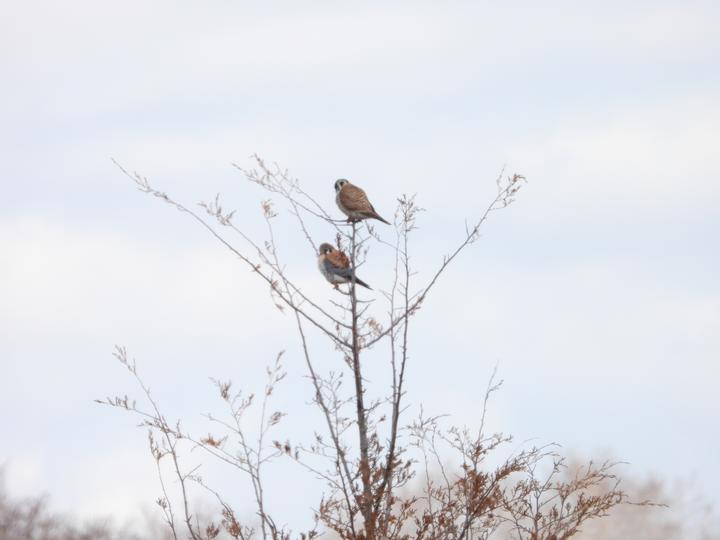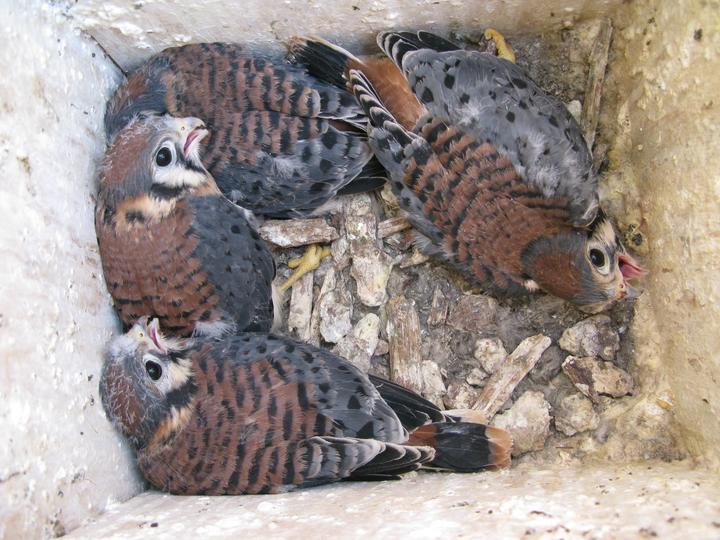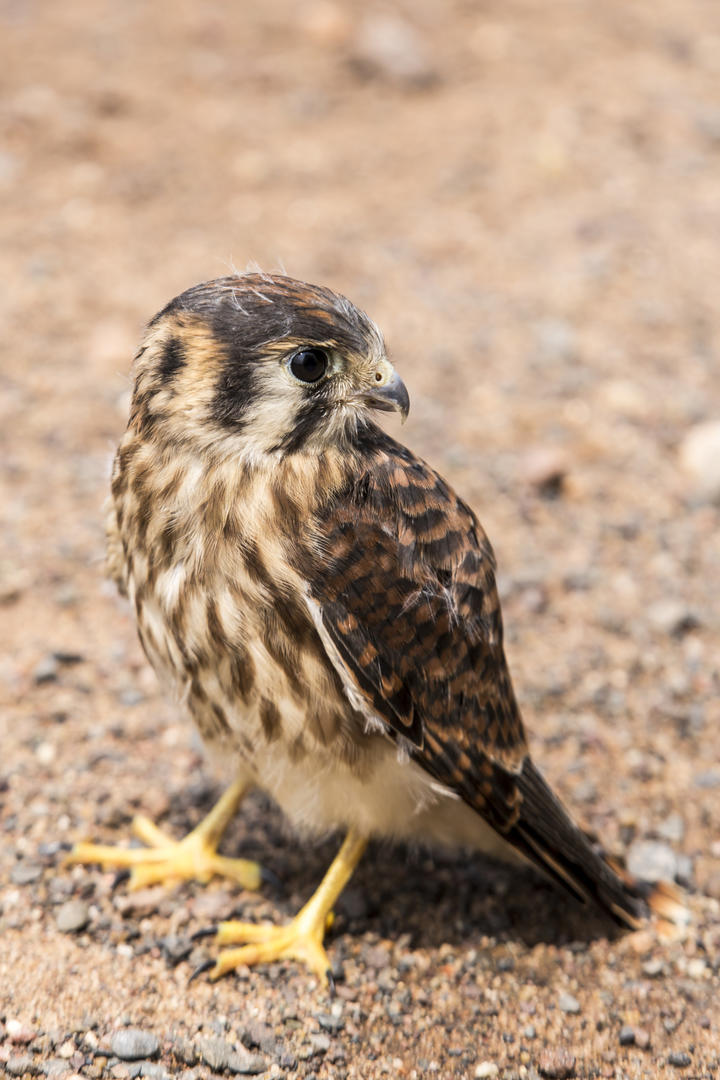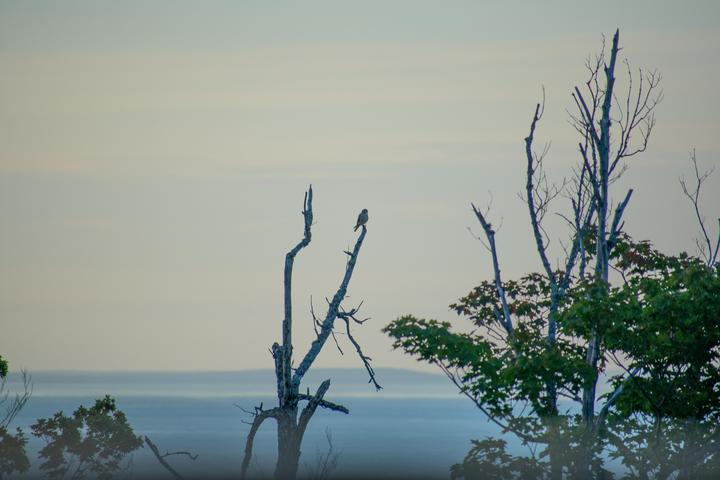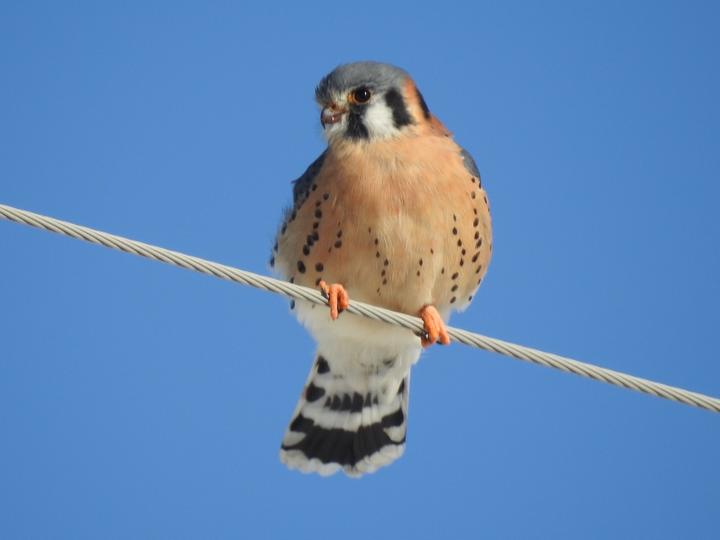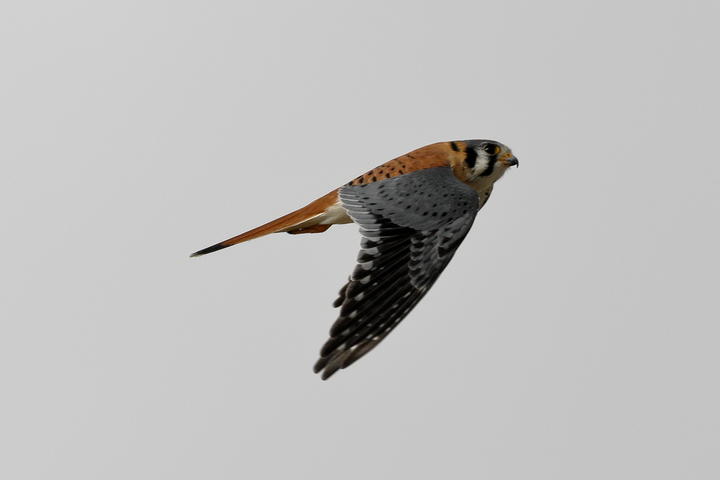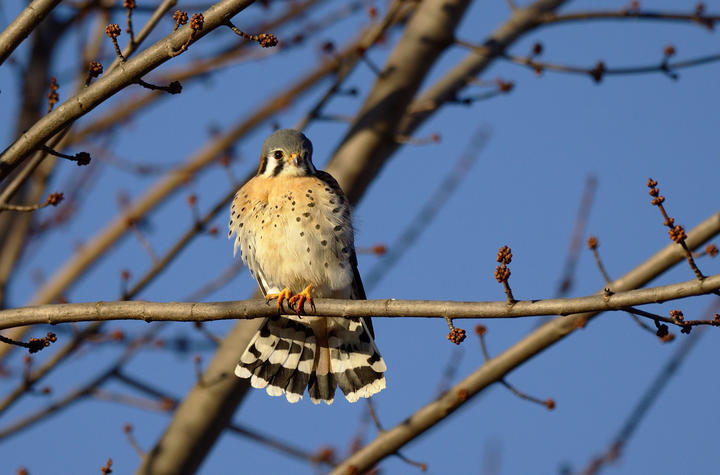More names for this bird
The Dakota and Anishinaabe were among the earliest people to name Minnesota’s plants and animals, as well as to understand them in relation to Minnesota’s climate and seasons. Those original names are still in use, and several are included on the Season Watch website. However, complete translations were not available.
Latin (or scientific name): Falco sparverius
The scientific community has a convention of assigning agreed-upon Latin names to every kind of organism. Using scientific names helps people communicate confidently about the same organism and organize lifeforms based on how closely related they are.
More common names: Sparrow hawk
Page contents
About the American kestrel
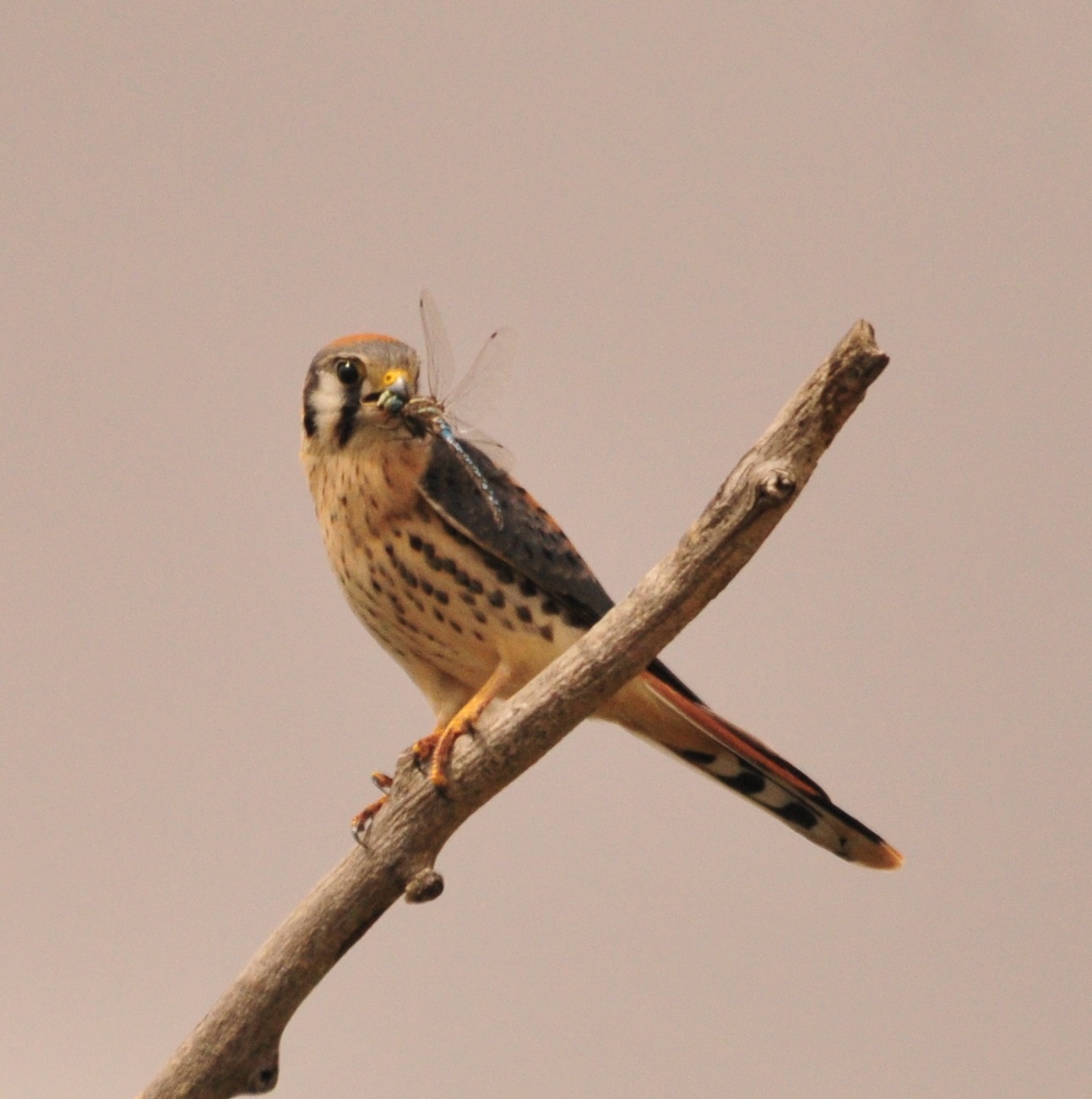
September 1, 2015, Sweetwater County, Wyoming
Photo by Tom Koerner/USFWS CC BY 2.0
Source: Flickr
About the American kestrel
- The American kestrel is Minnesota's most colorful and smallest falcon. It is approximately the same size as a mourning dove.
- Their diet consists mostly of insects like grasshoppers, butterflies and moths as well as small rodents such as mice, shrews and voles.
- The kestrel is a cavity dweller and will nest in tree hollows, crevices in rocks, old woodpecker holes and even nooks and crannies in human-built structures.
- The incubation period for their eggs is about a month, and once hatched, it takes approximately another month before the young leave the nest.
- American kestrels migrate. Expand the "Migration animation" section below to learn more.
Migration animation
Migration animation
Click the full-frame icon (lower right corner of video) to play at full size.
More about eBird's abundance animations
eBird data from 2006-2020. Estimated for 2020. Fink, D., T. Auer, A. Johnston, M. Strimas-Mackey, O. Robinson, S. Ligocki, W. Hochachka, L. Jaromczyk, C. Wood, I. Davies, M. Iliff, L. Seitz. 2021. eBird Status and Trends, Data Version: 2020; Released: 2021. Cornell Lab of Ornithology, Ithaca, New York. https://doi.org/10.2173/ebirdst.2020
Visual guide to phenology
Watch for changes to American kestrels' presence (or absence), abundance, and behaviors at different times of year. Also, pay attention to when young-of-year appear and develop.
Note to observers
This page explains general clues to watch for when observing American kestrel phenology. However, this page does not explain how to identify this bird or collect data in a standardized way.
- For help with identification, see The Cornell Lab's All About Birds.
- For guidance on collecting data, see Nature’s Notebook.
Graphs and historical data
Note: The Orientation Center provides a map, as well as information on reading graphs; interpreting summary statistics, who collected the data and how; and how to download datasets for independent exploration.
Arrival
- Earliest: February 14 (occurred in 2003)
- Average: March 16
- Latest: April 3 (occurred in 1984)
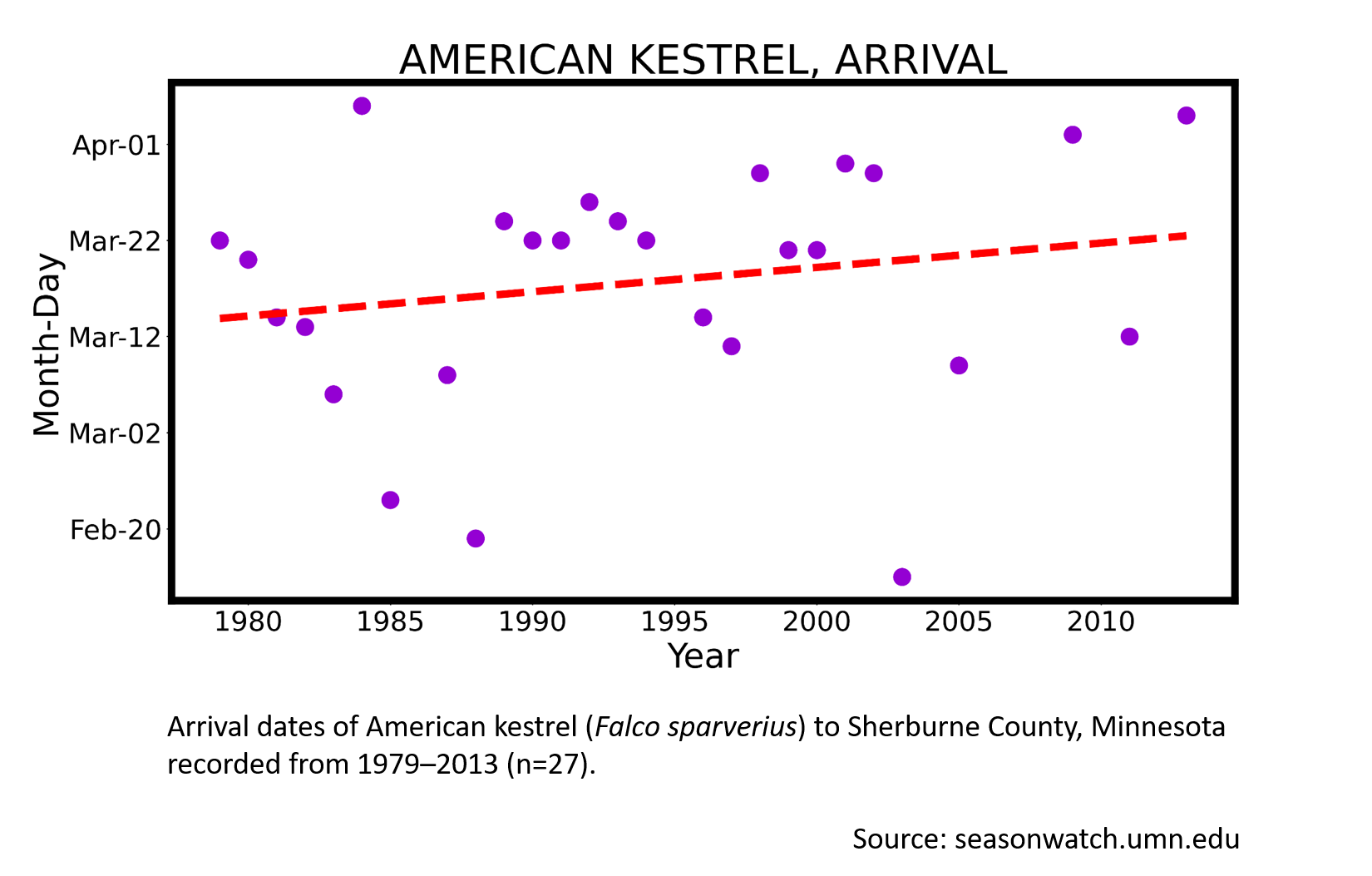
More resources
Keep exploring Season Watch
Keep exploring Season Watch
Co-author: Jayme Hogan, Minnesota Master Naturalist
